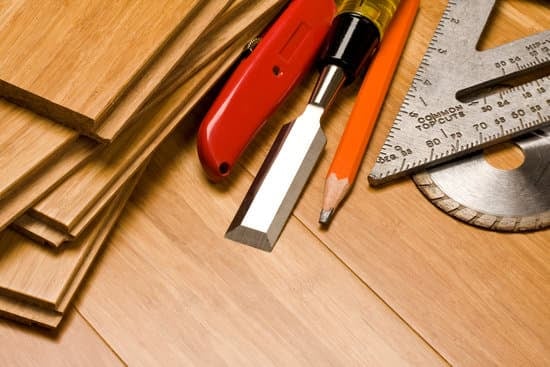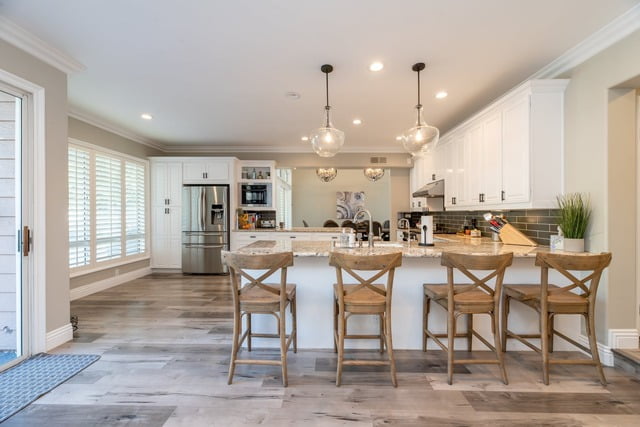Are you wondering how to pay for home improvements? Making enhancements to your home is an important aspect of homeownership. From necessary repairs to aesthetic upgrades, investing in your property can increase its value and improve your quality of life. In this article, we will explore the various funding options available for home improvements and provide tips on making smart financial decisions when it comes to renovating and maintaining your home.
Assessing your Home Improvement Needs is the first step towards creating a plan. Identifying priorities will help you allocate funds wisely and ensure that essential repairs are addressed promptly. Once you have a clear understanding of what needs to be done, budgeting for home improvements becomes the next crucial task. Setting realistic financial goals will help you avoid overspending and minimize financial stress as you embark on your home improvement journey.
When it comes to funding options for home improvements, there are several avenues to consider. Whether it’s through loans, utilizing savings, or tapping into other resources, choosing the right financing option can make a significant difference in the overall cost of your projects.
Additionally, exploring government assistance programs for home improvements can provide valuable support for those who qualify, further easing the financial burden of making necessary changes to your home. Stay tuned as we delve deeper into these topics and more throughout this article.
Assessing Your Home Improvement Needs
Evaluating the Most Urgent Repairs and Upgrades
Before embarking on any home improvement project, it’s crucial to assess your home’s most urgent needs. This could include anything from a leaky roof or outdated electrical system to a drafty window or malfunctioning HVAC unit. By prioritizing these immediate repairs and upgrades, you can ensure that your home remains safe, comfortable, and functional for you and your family.
Considering Long-Term Goals and Desired Upgrades
In addition to addressing immediate concerns, it’s also important to consider your long-term goals for your home. Are you looking to increase your property value with a kitchen remodel? Or perhaps create a more energy-efficient space by upgrading insulation and windows? Identifying these priorities will help guide your decision-making process when budgeting for home improvements and exploring funding options.
Seeking Professional Input
For many homeowners, assessing their home improvement needs can be a daunting task. In such cases, seeking professional input from contractors or home improvement experts can provide valuable insights. These professionals can offer guidance on identifying priorities based on their expertise and experience, helping you make informed decisions about which projects should take precedence in your overall plan for home improvements.
Budgeting for Home Improvements
When it comes to budgeting for home improvements, setting realistic financial goals is essential to ensure that you can successfully complete your projects without breaking the bank. Here are some tips for setting realistic financial goals:
- Assess your current financial situation: Before diving into any home improvement project, take a detailed look at your finances. Consider your income, savings, and any existing debt to determine how much you can realistically afford to spend on home improvements.
- Prioritize your needs: Make a list of all the home improvement projects you would like to undertake and prioritize them based on urgency and importance. This will help you allocate your budget more effectively and focus on the most crucial areas of improvement.
- Research the costs: Take the time to research the typical costs associated with the specific home improvement projects you have in mind. Get quotes from contractors or look up prices for materials to get a better understanding of what you can expect to spend.
Setting realistic financial goals for your home improvements will not only help you stay within budget but also prevent any potential financial strain or stress during the renovation process. By carefully assessing your financial situation, prioritizing your needs, and researching costs, you can ensure that your home improvement projects are financially feasible and successful.
Funding Options for Home Improvements
When it comes to funding home improvements, there are several options available to homeowners. One common method is to use savings or a personal budget to cover the costs of renovations. By setting aside money specifically for home improvements, homeowners can avoid going into debt and can have more flexibility in how they want to upgrade their living space.
Another funding option for home improvements is obtaining a loan. Whether it’s a home equity loan, a personal loan, or a line of credit, borrowing money can provide the necessary funds to complete larger-scale projects that may not be feasible with just savings alone. It’s important for homeowners to carefully consider their ability to repay the loan and explore different lenders to find the best terms and interest rates.
In addition to using personal savings or loans, homeowners can also consider other resources for funding home improvements. For example, some people may choose to use their tax refunds or bonuses from work towards renovating their homes. Others may look into crowdfunding or seeking financial assistance from family members. By exploring these alternative resources, individuals can discover creative ways to fund their home improvement projects without putting excessive strain on their finances.
Exploring Government Assistance Programs for Home Improvements
Government assistance programs can be a valuable resource for homeowners looking to make improvements to their homes. These programs are designed to provide financial assistance or other resources to help make home improvements more affordable.
One popular government program is the Federal Housing Administration’s (FHA) Title I Property Improvement Loan Program, which provides loans to homeowners to make necessary home improvements. This program is particularly helpful for those who may not qualify for traditional home improvement loans due to credit issues.
Another government assistance program for home improvements is the U.S. Department of Agriculture’s (USDA) Rural Development Program, which offers grants and low-interest loans to homeowners in rural areas for home repair and improvements. Additionally, some local and state governments offer their own assistance programs, such as grants or forgivable loans, to help homeowners make essential repairs and upgrades.
It’s important for homeowners to carefully research and understand the eligibility requirements and application processes for these government assistance programs. Additionally, it’s advisable to explore all available options and compare the benefits and limitations of each program before making a decision on which program best fits your needs.
| Government Assistance Program | Benefits |
|---|---|
| FHA Title I Property Improvement Loan Program | Provides loans for necessary home improvements |
| USDA Rural Development Program | Offers grants and low-interest loans for rural area homeowners |
| Local and State Government Programs | May offer grants or forgivable loans for essential repairs |
DIY vs Hiring Professionals
When it comes to home improvement projects, one of the key decisions to make is whether to tackle the work yourself or hire professionals. Both options have their pros and cons, and understanding what they are can help you make a cost-effective decision.
DIY Projects
One of the biggest advantages of taking on home improvement projects yourself is the potential for significant cost savings. By providing your own labor, you can avoid paying for professional services, which can often be the most expensive part of a project. Additionally, doing it yourself allows you to work at your own pace and on your own schedule. You also have complete control over the materials and design choices, ensuring that the final result meets your vision.
However, it’s important to recognize that not all projects are suitable for DIY. Some tasks may require specialized skills or equipment that you may not have. Attempting these projects on your own could lead to costly mistakes or even safety hazards. It’s crucial to honestly assess your abilities and comfort level with each project before deciding to tackle it yourself.
Hiring Professionals
While hiring professionals typically involves higher upfront costs, it can be a cost-effective choice in the long run. Experienced contractors bring expertise and efficiency to a project, often completing the work more quickly and with better results than if you were doing it yourself. They also have access to professional-grade materials and tools, which may lead to a higher-quality finished product.
Moreover, hiring professionals can save you time and hassle. Instead of spending weekends or evenings working on home projects, you can entrust the work to skilled individuals while continuing with your daily routine. It’s important to carefully research and vet any professional you choose to hire for reliability and quality of work.
Ultimately, whether you choose DIY or hire professionals for home improvement projects depends on various factors such as your budget, available time, skill level, and the complexity of the project at hand. Assessing these factors thoughtfully will ensure that you’re making a cost-effective choice that aligns with both your financial goals and desired outcome for your home improvements.
Maximizing Your Home’s Value
When it comes to home improvements, making smart choices can significantly increase your home’s value. One of the most lucrative areas to invest in is the kitchen. A modern, functional, and visually appealing kitchen can greatly enhance the overall value of your home.
Consider upgrading appliances, installing energy-efficient fixtures, and refreshing the cabinetry and countertops. These investments not only make your home more attractive to potential buyers but also improve your quality of life while you’re living there.
Another valuable area to focus on is the bathroom. Similar to the kitchen, updating fixtures, adding storage solutions, and improving the overall aesthetics of your bathroom can provide an excellent return on investment (ROI).
According to a report from Remodeling Magazine, a mid-range bathroom remodel can recoup up to 67% of its cost at resale. However, it’s important to strike a balance between investing in high-impact projects that maximize value without overspending for your neighborhood’s market conditions.
In addition to specific rooms like the kitchen and bathroom, other smart home improvements include enhancing curb appeal with landscaping updates, adding energy-efficient windows and doors, investing in a new roof or HVAC system for improved energy efficiency and functionality. These types of upgrades not only add value to your home but also make it more desirable to potential buyers if you decide to sell in the future.
| Home Improvement Project | Return on Investment (ROI) |
|---|---|
| Kitchen Remodel | 70-80% |
| Bathroom Remodel | 60-70% |
| Curb Appeal Enhancements | 100-150% |
Tips for Saving Money on Home Improvement Projects
Home improvement projects can often come with a hefty price tag, but there are ways to save money while still making meaningful changes to your home. One tip for saving money on home improvement projects is to prioritize the most important and impactful changes first. By identifying the areas of your home that are in the most need of improvement and focusing on those, you can allocate your budget more effectively.
Another way to save money on home improvement projects is by taking advantage of sales, discounts, and promotions. Many home improvement stores offer seasonal sales or clearance events where you can find quality materials and products at a discounted price. Keeping an eye out for these opportunities can help you stretch your budget further without sacrificing the quality of your project.
Additionally, consider doing some of the work yourself rather than hiring professionals for every aspect of the project. While certain tasks may require expertise and experience, there are often smaller jobs that can be tackled independently with the help of online tutorials and guides.
By taking on some of the work yourself, you can save on labor costs and reduce the overall expense of your home improvement project. Overall, with careful planning and strategic decision-making, it is possible to make meaningful upgrades to your home while staying within a reasonable budget.
Conclusion
In conclusion, making your home improvement dreams a reality is not just about having a vision for your ideal living space, but also about taking practical steps to achieve it. By assessing your home improvement needs, setting realistic financial goals, and exploring funding options such as loans and savings, you can make significant progress towards upgrading your home. Additionally, government assistance programs can provide valuable resources for those in need of financial support for essential home improvements.
Whether you choose to take the do-it-yourself route or hire professionals for your home projects, it’s important to weigh the costs and benefits of each option. DIY projects can be cost-effective, but hiring professionals may ensure higher quality results and save you time and stress in the long run. Furthermore, investing in smart home improvements can maximize your home’s value, making it a worthwhile endeavor both for your immediate enjoyment and potential future resale value.
Ultimately, saving money on home improvement projects is achievable through strategic planning and budgeting. By researching cost-effective materials and methods, as well as taking advantage of discounts and rebates whenever possible, you can make the most of your budget without sacrificing quality. With careful planning and resourcefulness, you can turn your home improvement dreams into a reality that enhances both the functionality and aesthetic appeal of your living space.
Frequently Asked Questions
How Do People Pay for Their Renovations?
People pay for their renovations in a variety of ways. Some use personal savings or investments to cover the costs, while others may take out a home equity loan or line of credit.
Another common method is to use a personal loan or credit card specifically designed for home improvement projects. Some homeowners also choose to refinance their mortgage to access the equity in their home for renovations.
Can I Add to My Mortgage for Home Improvements?
Yes, it is possible to add to your mortgage for home improvements through a cash-out refinance or a renovation mortgage. With a cash-out refinance, you can borrow against the equity in your home and receive the funds as part of your new larger mortgage.
A renovation mortgage, such as an FHA 203(k) loan, allows you to finance both the purchase of the home and the cost of renovations in one loan.
Are Renovation Loans a Good Idea?
Renovation loans can be a good idea for many homeowners, as they provide the necessary funds to make improvements that can increase the value of their property. These loans often have lower interest rates than personal loans or credit cards, making them an attractive option for financing renovations.
However, it’s important to carefully consider the terms and conditions of renovation loans and ensure that you can afford the monthly payments before committing to one.

I’m thrilled to have you here as a part of the Remodeling Top community. This is where my journey as an architect and remodeling enthusiast intersects with your passion for transforming houses into dream homes.





